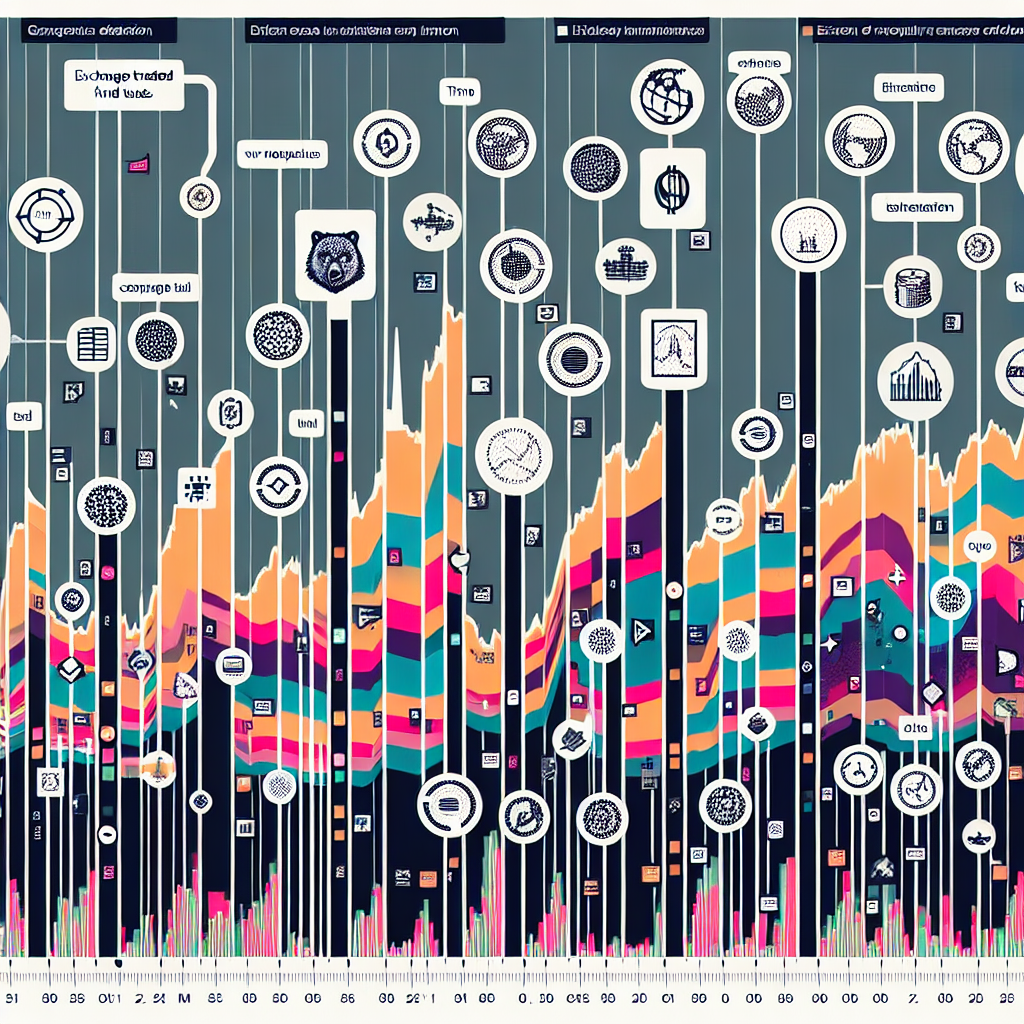“Post-Election Picks: Navigating Tomorrow’s Markets with Top ETFs”
Introduction
Following an election, investors often reassess their portfolios to align with anticipated policy changes and economic shifts. Popular ETFs among investors during this period typically reflect sectors expected to benefit from the new administration’s agenda. For instance, if the election results favor a party with a strong focus on renewable energy, ETFs centered around clean energy and technology may see increased interest. Conversely, if the election outcome suggests a boost for traditional industries, ETFs focusing on sectors like manufacturing or fossil fuels might gain traction. Additionally, broad market ETFs that offer diversification across various sectors often remain popular as investors seek stability amid potential market volatility. Understanding these trends can provide insight into investor sentiment and market expectations in the post-election landscape.
Impact Of Election Results On ETF Performance
The impact of election results on the performance of Exchange-Traded Funds (ETFs) is a subject of considerable interest among investors, as political shifts can significantly influence market dynamics. Following an election, investors often reassess their portfolios, seeking to capitalize on anticipated policy changes and economic trends. This behavior is particularly evident in the ETF market, where the flexibility and diversity of these investment vehicles allow for strategic adjustments in response to evolving political landscapes.
In the aftermath of an election, certain sectors may experience heightened investor interest, driven by the expected policy directions of the newly elected government. For instance, if the election results suggest a government with a strong focus on renewable energy, ETFs that track clean energy indices may see increased inflows. This is because investors anticipate favorable regulatory environments and potential subsidies that could boost the profitability of companies within this sector. Conversely, if the election results favor a government with a more traditional energy agenda, ETFs focused on oil and gas might experience a surge in popularity.
Moreover, the election results can also impact ETFs that are sensitive to changes in fiscal and monetary policies. For example, if the newly elected government is expected to implement expansive fiscal policies, such as increased infrastructure spending, ETFs that focus on construction and industrial sectors might attract more investors. These funds could benefit from the anticipated increase in government contracts and spending. On the other hand, if the election results indicate a government inclined towards austerity measures, investors might pivot towards ETFs that emphasize sectors less reliant on government spending.
In addition to sector-specific ETFs, broad market ETFs can also be affected by election outcomes. The overall market sentiment post-election can lead to fluctuations in major indices, which in turn impacts ETFs that track these indices. For instance, a positive market reaction to the election results might lead to a rally in ETFs that track the S&P 500 or the Dow Jones Industrial Average. Conversely, uncertainty or negative sentiment could result in a decline in these ETFs, as investors seek safer havens or more stable investment options.
Furthermore, international ETFs are not immune to the effects of domestic election results. Changes in foreign policy, trade agreements, and international relations stemming from a new government can influence the performance of ETFs that focus on specific countries or regions. For example, if the election results suggest a more protectionist trade policy, ETFs with significant exposure to international markets might experience volatility as investors reassess the potential impact on global trade dynamics.
In conclusion, the performance of ETFs post-election is intricately linked to the anticipated policy directions and economic strategies of the newly elected government. Investors keenly observe these developments, adjusting their ETF holdings to align with the expected market trends. By understanding the potential implications of election results on various sectors and market indices, investors can make informed decisions to optimize their portfolios. As such, the post-election period presents both challenges and opportunities for ETF investors, underscoring the importance of staying informed and adaptable in a rapidly changing political and economic environment.
Sector-Specific ETFs Gaining Traction Post-Election
In the wake of the recent election, investors have been closely monitoring the financial markets to identify emerging trends and opportunities. One area that has garnered significant attention is sector-specific exchange-traded funds (ETFs), which have become increasingly popular among investors seeking to capitalize on post-election economic shifts. These ETFs, which focus on specific sectors of the economy, offer a targeted approach to investing, allowing investors to align their portfolios with anticipated policy changes and market dynamics.
To begin with, the technology sector has been a focal point for many investors, driven by expectations of continued innovation and digital transformation. Technology-focused ETFs have seen a surge in interest as investors anticipate that the sector will remain a key driver of economic growth. The ongoing demand for cloud computing, cybersecurity, and artificial intelligence solutions underscores the potential for robust performance in this sector. Moreover, the increasing reliance on technology in various industries suggests that technology ETFs may continue to attract investor attention in the foreseeable future.
In addition to technology, the renewable energy sector has emerged as a significant area of interest post-election. With growing concerns about climate change and a global push towards sustainable energy solutions, renewable energy ETFs have gained traction among investors. The election results have reinforced expectations of supportive policies for clean energy initiatives, further boosting investor confidence in this sector. As governments worldwide commit to reducing carbon emissions and transitioning to greener energy sources, renewable energy ETFs are poised to benefit from increased investment and development in this field.
Furthermore, the healthcare sector has also captured the interest of investors, particularly in light of the ongoing global health challenges. Healthcare ETFs have become attractive options for those looking to invest in companies involved in pharmaceuticals, biotechnology, and medical devices. The election has brought renewed focus on healthcare policy, with potential implications for drug pricing, healthcare access, and innovation. As a result, investors are keen to explore opportunities within this sector, anticipating that healthcare ETFs may offer resilience and growth potential in a post-election landscape.
Transitioning to another area of interest, the financial sector has also seen a resurgence in investor attention. Financial ETFs, which include banks, insurance companies, and asset management firms, are being closely watched as investors assess the impact of potential regulatory changes and economic recovery efforts. The election outcome has sparked discussions around fiscal policies and interest rates, which could influence the performance of financial institutions. Consequently, investors are considering financial ETFs as a means to gain exposure to this sector, which may benefit from a favorable economic environment.
Lastly, the industrial sector is another area where sector-specific ETFs are gaining traction. Industrial ETFs, which encompass companies involved in manufacturing, construction, and transportation, are being eyed by investors anticipating infrastructure spending and economic revitalization. The election has heightened expectations of government initiatives aimed at boosting infrastructure development, which could provide a tailwind for industrial companies. As such, investors are increasingly looking to industrial ETFs as a way to participate in potential growth opportunities within this sector.
In conclusion, sector-specific ETFs have become a popular choice among investors post-election, as they seek to navigate the evolving economic landscape. By focusing on specific sectors such as technology, renewable energy, healthcare, financials, and industrials, these ETFs offer targeted exposure to areas poised for growth and transformation. As investors continue to assess the implications of the election on various sectors, sector-specific ETFs are likely to remain a key component of investment strategies in the coming months.
How Political Changes Influence ESG ETFs
In the wake of recent elections, investors have shown a marked interest in Environmental, Social, and Governance (ESG) ETFs, reflecting a broader trend towards sustainable and responsible investing. Political changes often serve as a catalyst for shifts in investment strategies, and the latest electoral outcomes are no exception. As governments worldwide increasingly prioritize climate change, social equity, and corporate governance, investors are keen to align their portfolios with these evolving priorities. This alignment is not merely a reflection of ethical considerations but also a strategic response to anticipated regulatory changes and market opportunities.
The growing popularity of ESG ETFs can be attributed to several factors, one of which is the heightened awareness of climate change and its economic implications. Political leaders, particularly in regions with progressive environmental policies, are pushing for stricter regulations on carbon emissions and greater investment in renewable energy. Consequently, investors are gravitating towards ESG ETFs that focus on companies with strong environmental credentials. These funds not only promise potential financial returns but also offer a way to support the transition to a low-carbon economy.
Moreover, social issues have gained prominence in the political arena, influencing investor behavior. The recent elections have underscored the importance of social justice, diversity, and inclusion, prompting investors to consider the social impact of their investments. ESG ETFs that prioritize companies with robust social policies are becoming increasingly attractive. These funds typically invest in firms that demonstrate a commitment to fair labor practices, community engagement, and diversity in leadership. As political discourse continues to emphasize social equity, the demand for such ETFs is likely to grow.
In addition to environmental and social factors, governance issues are also at the forefront of investors’ minds. Political changes often lead to shifts in corporate governance standards, with new regulations aimed at enhancing transparency and accountability. Investors are therefore drawn to ESG ETFs that focus on companies with exemplary governance practices. These funds tend to invest in firms with strong board structures, ethical business practices, and a commitment to shareholder rights. As governments implement policies to improve corporate governance, these ETFs are poised to benefit from increased investor interest.
Transitioning from the political landscape to the financial markets, it is evident that ESG ETFs offer a compelling proposition for investors seeking to navigate the complexities of a post-election environment. The integration of ESG factors into investment decisions is not only a response to political changes but also a recognition of the long-term value these factors can bring. As more investors acknowledge the financial materiality of ESG issues, the popularity of these funds is expected to rise.
Furthermore, the role of technology in facilitating ESG investing cannot be overlooked. Advancements in data analytics and artificial intelligence have made it easier for investors to assess the ESG performance of companies, thereby enhancing the appeal of ESG ETFs. These technological tools enable investors to make informed decisions, aligning their portfolios with both their financial goals and ethical values.
In conclusion, the post-election period has underscored the influence of political changes on investment strategies, particularly in the realm of ESG ETFs. As governments prioritize sustainability and social responsibility, investors are increasingly drawn to funds that reflect these values. The growing interest in ESG ETFs is a testament to the evolving landscape of investing, where financial returns and ethical considerations are becoming increasingly intertwined. As this trend continues, ESG ETFs are likely to remain a popular choice among investors seeking to align their portfolios with the changing political and economic environment.
Post-Election Trends In Technology-Focused ETFs

In the wake of the recent election, investors have been closely monitoring the financial markets to identify emerging trends and opportunities. One area that has garnered significant attention is technology-focused Exchange-Traded Funds (ETFs). These investment vehicles, which pool together a collection of technology stocks, have become increasingly popular among investors seeking to capitalize on the rapid advancements and innovations within the tech sector. As the political landscape shifts, so too do the dynamics of the market, prompting investors to reassess their strategies and consider the potential impacts on technology-focused ETFs.
To begin with, the technology sector has long been a driving force in the global economy, and its influence continues to grow. The recent election has brought about policy changes and regulatory considerations that could affect the tech industry in various ways. For instance, discussions around data privacy, antitrust regulations, and digital infrastructure investments are likely to shape the future of technology companies. Consequently, investors are keen to understand how these factors might influence the performance of technology-focused ETFs.
Moreover, the increasing reliance on digital solutions and remote work, accelerated by the global pandemic, has underscored the importance of technology in everyday life. This shift has led to a surge in demand for tech products and services, further boosting the appeal of technology-focused ETFs. Investors are particularly interested in ETFs that include companies specializing in cloud computing, cybersecurity, artificial intelligence, and e-commerce, as these areas are expected to experience substantial growth in the coming years.
In addition to these considerations, the election has also highlighted the importance of sustainable and socially responsible investing. Many investors are now looking for technology-focused ETFs that align with environmental, social, and governance (ESG) criteria. This trend reflects a growing awareness of the need for sustainable business practices and the potential for long-term value creation. As a result, ETFs that prioritize companies with strong ESG credentials are becoming increasingly attractive to investors who wish to align their portfolios with their values.
Furthermore, the global nature of the technology sector means that international developments can also have a significant impact on technology-focused ETFs. Trade policies, geopolitical tensions, and international collaborations all play a role in shaping the landscape for tech companies. Investors are therefore paying close attention to how these factors might influence the performance of their chosen ETFs. For example, changes in trade relations between major economies could affect supply chains and market access for technology firms, thereby impacting the ETFs that hold these companies.
In conclusion, the post-election environment presents both challenges and opportunities for investors in technology-focused ETFs. As the political and economic landscape continues to evolve, investors must remain vigilant and adaptable in their approach. By considering the potential impacts of policy changes, technological advancements, and global developments, investors can make informed decisions about their ETF investments. Ultimately, the popularity of technology-focused ETFs is likely to persist as investors seek to harness the growth potential of the tech sector while navigating the complexities of the post-election market. Through careful analysis and strategic planning, investors can position themselves to benefit from the dynamic and ever-changing world of technology-focused ETFs.
The Rise Of Infrastructure ETFs After Elections
In the wake of recent elections, the investment landscape has experienced notable shifts, particularly in the realm of exchange-traded funds (ETFs). Among these, infrastructure ETFs have garnered significant attention from investors, reflecting a broader trend towards sectors poised for growth under new political leadership. This surge in interest can be attributed to the promises of increased government spending on infrastructure projects, a common theme in post-election economic strategies aimed at stimulating growth and job creation.
Infrastructure ETFs, which typically invest in companies involved in the development and maintenance of physical structures such as roads, bridges, and utilities, have become increasingly popular. This popularity is not only due to the anticipated government spending but also because these funds offer a diversified approach to investing in a sector that is often seen as a cornerstone of economic development. As governments worldwide prioritize infrastructure to boost economic recovery, investors are keen to capitalize on the potential for long-term growth in this sector.
Moreover, the appeal of infrastructure ETFs is further enhanced by their ability to provide exposure to both domestic and international markets. This global reach allows investors to benefit from infrastructure developments in emerging markets, where rapid urbanization and industrialization are driving demand for new projects. Consequently, infrastructure ETFs offer a unique opportunity to tap into growth stories across different regions, thereby diversifying risk and enhancing potential returns.
In addition to the macroeconomic factors driving interest in infrastructure ETFs, there are also specific characteristics of these funds that make them attractive to investors. For instance, many infrastructure ETFs offer relatively stable income streams, as the companies they invest in often operate in regulated industries with predictable cash flows. This stability is particularly appealing in uncertain economic times, providing a degree of security that is highly valued by risk-averse investors.
Furthermore, the rise of sustainable investing has also played a role in the growing popularity of infrastructure ETFs. As environmental, social, and governance (ESG) considerations become increasingly important to investors, many infrastructure projects are being designed with sustainability in mind. This shift towards green infrastructure aligns with the values of socially conscious investors, who are eager to support projects that contribute to a more sustainable future. Consequently, infrastructure ETFs that focus on sustainable projects are attracting a new wave of investors who are looking to align their portfolios with their ethical values.
While the post-election environment has certainly provided a catalyst for the rise of infrastructure ETFs, it is important to recognize that this trend is part of a broader movement towards thematic investing. Investors are increasingly looking for opportunities that align with long-term structural trends, such as urbanization, technological advancement, and sustainability. Infrastructure, as a sector that intersects with all these themes, is well-positioned to benefit from this shift in investment strategy.
In conclusion, the rise of infrastructure ETFs post-election is a reflection of both political and economic factors, as well as evolving investor preferences. As governments commit to infrastructure spending to drive economic recovery, and as investors seek stable, diversified, and sustainable investment opportunities, infrastructure ETFs are likely to remain a popular choice. This trend underscores the importance of understanding the interplay between policy decisions and market dynamics, as well as the need for investors to stay informed about emerging opportunities in the ever-evolving financial landscape.
Healthcare ETFs: A Post-Election Analysis
In the aftermath of the recent election, investors have been closely monitoring the healthcare sector, which has emerged as a focal point for many due to its potential for growth and resilience. Healthcare ETFs, in particular, have garnered significant attention as they offer a diversified approach to investing in this critical sector. These funds, which pool together a variety of healthcare-related stocks, provide investors with exposure to a broad spectrum of companies, ranging from pharmaceutical giants to innovative biotech firms. As the political landscape shifts, the healthcare sector often experiences fluctuations, influenced by policy changes and regulatory adjustments. Consequently, healthcare ETFs have become a popular choice for investors seeking to navigate the complexities of the post-election market environment.
One of the primary reasons for the increased interest in healthcare ETFs is the sector’s inherent stability and growth potential. Healthcare is a fundamental need, and demand for medical services and products tends to remain robust regardless of economic conditions. This resilience makes healthcare ETFs an attractive option for investors looking to mitigate risk while still capitalizing on growth opportunities. Moreover, the aging global population and the continuous advancements in medical technology further bolster the sector’s long-term prospects. As a result, investors are increasingly turning to healthcare ETFs as a means to gain exposure to these promising trends.
In addition to the sector’s stability, the post-election period often brings about policy changes that can significantly impact healthcare companies. For instance, shifts in government priorities regarding healthcare funding, insurance regulations, and drug pricing can create both challenges and opportunities for the sector. Healthcare ETFs, by their diversified nature, allow investors to spread their risk across multiple companies, thereby reducing the impact of any single policy change on their overall investment. This diversification is particularly appealing in a post-election context, where uncertainty and volatility may be heightened.
Furthermore, the recent election has reignited discussions around healthcare reform, with potential implications for various subsectors within the industry. For example, pharmaceutical companies may face increased scrutiny over drug pricing, while healthcare providers could see changes in reimbursement models. In this dynamic environment, healthcare ETFs offer a strategic advantage by providing exposure to a wide array of companies that may be differently affected by these policy shifts. This broad exposure enables investors to capture potential gains from companies that stand to benefit from new regulations while minimizing the risks associated with those that may face headwinds.
Another factor contributing to the popularity of healthcare ETFs is their accessibility and cost-effectiveness. Unlike investing directly in individual stocks, which requires significant research and analysis, ETFs offer a simplified approach to gaining exposure to the healthcare sector. Investors can purchase shares of a healthcare ETF just as they would a single stock, gaining instant diversification across numerous companies. Additionally, ETFs typically have lower expense ratios compared to mutual funds, making them a cost-effective option for investors seeking to optimize their portfolios.
In conclusion, healthcare ETFs have emerged as a favored investment vehicle among investors in the post-election landscape. Their ability to provide diversified exposure to a stable and growing sector, coupled with the potential to navigate policy-driven market fluctuations, makes them an attractive choice for those looking to capitalize on the evolving healthcare industry. As the political and economic environment continues to evolve, healthcare ETFs are likely to remain a key component of many investors’ strategies, offering both resilience and growth potential in an uncertain world.
International ETFs And Their Post-Election Appeal
In the wake of recent elections, investors have been closely monitoring the financial markets to identify opportunities that align with the evolving political and economic landscape. Among the various investment vehicles available, Exchange-Traded Funds (ETFs) have garnered significant attention due to their flexibility, diversification, and cost-effectiveness. Notably, international ETFs have emerged as particularly appealing to investors seeking to capitalize on global market trends and mitigate domestic risks. This interest is driven by several factors, including geopolitical shifts, currency fluctuations, and the potential for economic growth in foreign markets.
To begin with, the post-election period often brings about changes in government policies that can impact international trade relations and economic partnerships. Investors are keenly aware that such changes can create both challenges and opportunities in global markets. Consequently, international ETFs, which offer exposure to a broad range of foreign equities, have become attractive options for those looking to diversify their portfolios beyond domestic borders. By investing in these ETFs, investors can gain access to emerging markets that may benefit from favorable trade agreements or economic reforms initiated by newly elected governments.
Moreover, currency fluctuations play a crucial role in the appeal of international ETFs. The election outcomes can lead to shifts in currency values as markets react to anticipated changes in fiscal and monetary policies. For instance, a strengthening of the U.S. dollar might prompt investors to seek opportunities in regions where local currencies are expected to appreciate, thereby enhancing returns on investments denominated in those currencies. International ETFs provide a convenient means to capitalize on such currency movements, as they often include a diverse mix of assets from various countries, allowing investors to hedge against currency risks while potentially benefiting from favorable exchange rate trends.
In addition to geopolitical and currency considerations, the potential for economic growth in foreign markets is a significant driver of interest in international ETFs. Many investors are drawn to regions with robust economic prospects, such as Asia and Latin America, where rapid industrialization and expanding consumer markets present lucrative investment opportunities. Post-election, these regions may experience policy shifts that further stimulate economic growth, making them attractive destinations for capital inflows. International ETFs that focus on these high-growth areas enable investors to tap into these opportunities without the need to directly manage individual foreign stocks, thus simplifying the investment process.
Furthermore, the diversification benefits offered by international ETFs cannot be overstated. By spreading investments across multiple countries and sectors, these ETFs help mitigate the risks associated with political instability or economic downturns in any single market. This diversification is particularly appealing in the post-election environment, where uncertainty can lead to increased market volatility. Investors seeking to balance risk and reward may find international ETFs to be an effective tool for achieving their financial objectives while navigating the complexities of the global economy.
In conclusion, the post-election appeal of international ETFs is underscored by their ability to provide exposure to diverse global markets, capitalize on currency fluctuations, and harness the potential for economic growth in foreign regions. As investors continue to assess the implications of recent political changes, these ETFs offer a strategic avenue for diversifying portfolios and pursuing opportunities beyond domestic borders. With their inherent flexibility and broad market reach, international ETFs are poised to remain a popular choice among investors seeking to navigate the dynamic post-election landscape.
Q&A
1. **What is an ETF?**
– An ETF, or Exchange-Traded Fund, is a type of investment fund that is traded on stock exchanges, much like stocks. It holds assets such as stocks, commodities, or bonds and generally operates with an arbitrage mechanism designed to keep trading close to its net asset value.
2. **Which sectors saw increased interest in ETFs post-election?**
– Post-election, sectors such as clean energy, infrastructure, healthcare, and technology often see increased interest due to anticipated policy changes and government spending priorities.
3. **What are some popular clean energy ETFs?**
– Popular clean energy ETFs include the iShares Global Clean Energy ETF (ICLN) and the Invesco Solar ETF (TAN), which focus on companies involved in renewable energy sources and technologies.
4. **Why might infrastructure ETFs gain popularity post-election?**
– Infrastructure ETFs might gain popularity due to potential government initiatives to boost infrastructure spending, which can lead to increased revenues for companies involved in construction, engineering, and related industries.
5. **Can you name a popular healthcare ETF?**
– The Health Care Select Sector SPDR Fund (XLV) is a popular healthcare ETF that includes a wide range of companies in the healthcare sector, from pharmaceuticals to biotechnology.
6. **What technology ETFs are favored by investors?**
– Technology ETFs such as the Invesco QQQ Trust (QQQ) and the Technology Select Sector SPDR Fund (XLK) are favored by investors for their exposure to leading tech companies and innovation-driven growth.
7. **How do political changes influence ETF popularity?**
– Political changes can influence ETF popularity by shifting investor expectations regarding regulatory environments, fiscal policies, and government spending, which can impact specific sectors and industries.
Conclusion
Following an election, popular ETFs among investors often reflect the anticipated policy changes and economic priorities of the new administration. Investors typically gravitate towards sectors expected to benefit from the election outcome, such as renewable energy, infrastructure, or healthcare, depending on the political party in power. Additionally, ETFs focusing on small-cap stocks or specific industries may gain traction if investors foresee favorable regulatory or fiscal policies. The post-election period can also see increased interest in international ETFs if foreign policy shifts are expected. Overall, the popularity of certain ETFs post-election is driven by investor sentiment and expectations regarding the economic and regulatory landscape shaped by the new government.





